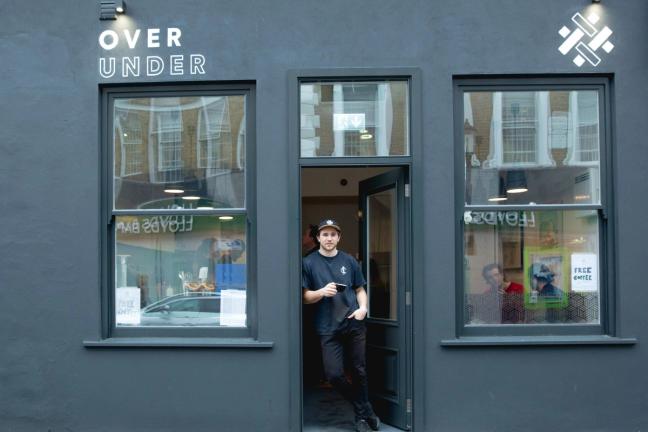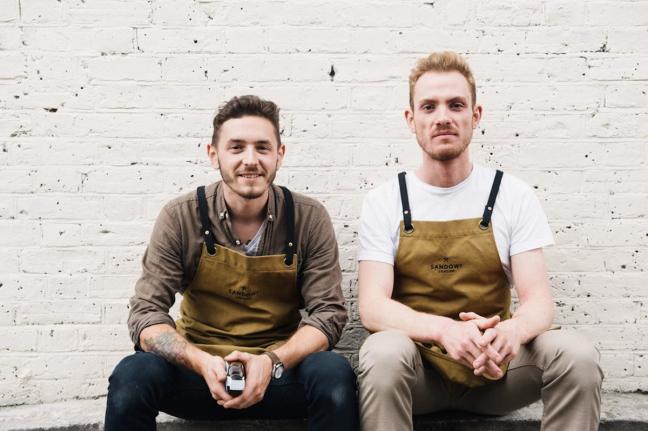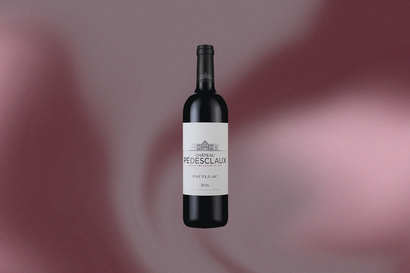The gentlemen entrepreneurs making waves in the world of coffee
Meet the men fuelling your caffeine fix
In the crowded, clichéd world of start-ups and entrepreneurs, coffee has a lot to answer for. While the ancient stimulant drags young speculators through all-night pitch preparations and suppresses the appetites of lean and hungry innovators everywhere, the proposal ‘perhaps I could take you for a coffee’ is most often followed by a bare-faced plea for liquid investment of a very different kind. The coffee shop, meanwhile, has long stood as a proxy incubator for those first striking out on their own – visit a Starbucks in central London and you’ll encounter as many MacBook Pros as you will elevator pitches for the Next Big Thing.
But now, after decades as a supporting player, coffee is stepping out in a leading role. The end-to-end coffee cycle, after all, occupies a gargantuan 2% of the world’s labour force, largely because the black stuff is incredibly time-intensive both to cultivate and to serve. In other words, this ancient business is as ripe for disruption as the taxi industry, say, or the world of rented accommodation. And it’s potentially much more lucrative. With that in mind, we sat down for a, well, coffee, with three of the young prospectors in the new land of Black Gold.

Arthur Kay has been featured in more Entrepreneur of the Year lists than he’s had hot coffees, which, presumably, is quite a lot – after all, his startup Bio Bean deals in the waste products of the world’s colossal caffeine habit. When working on a project for a sustainable coffee shop as an architecture student, Arthur hit on the idea of turning all those wasted coffee grounds into a renewable fuel – the kind of “why didn’t I think of that” idea that causes would-be entrepreneurs to instantly macerate their TechCrunch-branded stress balls. Three years later, and Bio-Bean’s advanced biofuels power several urban transport solutions, while their patented biomass pellets are heating buildings across the world at this very moment with barely a shadow of a carbon footprint.
The idea was so good, in fact, that Arthur almost didn’t pursue it. “I assumed that either it was being done and I just didn’t know about it, or it had been tried but didn’t work due to the economics of the process.” Fortunately, Arthur’s hesitations proved unfounded. And through a tentative combination of reaching out for advice, tracking down experts, and laying all his fragile, ingenious IP on the table, Arthur was able to hone his lightbulb moment into a viable business model. “At the beginning, I was very nervous about sharing my thoughts with advisors. But then someone reminded me that if anyone’s dishonest or stupid enough to steal an idea from a 22 year old novice, they probably don’t have the brains to make it work.”
“So I treated it as an exercise in seeking advice. People often treat their early meetings as a pitch, which is naturally a combative approach – ‘are you in or out’, that sort of thing.” Arthur thinks that one mistake many first time entrepreneurs make is being too precious with their ideas. “Ideas are helpful, but what really matters is execution. I think people often get that the wrong way round.”
At Bio-Bean, Arthur seems to have got things in their rightful order. First, a world class line-up. “We have a fantastic team that’s drawn from disparate industries – our management has hundreds of years of experience between them in chemicals and biofuels.” In a business as dominated by behemothic conglomerates as energy, you need all the firepower you can get. “I’d much rather have great people in the tent and share some equity with them than own 100% of nothing” Arthur says.
Though Arthur has been named a hero of sustainable fuels and a pioneer of green entrepreneurship, he’s keen to stress that it’s hard-business truths, not warm fuzzy feelings, that fuel the company. “The biggest mistake that sustainable entrepreneurs make is that they think people will buy their product just because it’s green.” he tells me. “If you want to succeed, you need to ensure that you’re offering people a better service or a cheaper service. Or, hopefully, both.” With a new, highly secretive fuel product launching in May, Bio-Bean looks set to do just that in characteristically disruptive style.

“You might be the first person a customer sees all day” says Ed Barry, owner of Over Under Coffee. “Your attitude dictates how they get on for the rest of their day – what a responsibility!” It’s not one Ed takes lightly. While working as Upper East Side “manny” in Manhattan, the young entrepreneur became infected with the city’s weakness for the black stuff, and saw just how central this daily ritual had become in people’s lives. “I loved the coffee hospitality out there. But I felt it was slightly pretentious” he says.
Like Arthur, Ed believes that, nine times out of ten, execution trumps the idea. In the early days, however, not everyone was convinced. “Most advisors I spoke to said ‘Why Earls Court’ [Ed quickly tots up 8 other coffee establishments within 100 metres of the Over Under site], and ‘What’s your USP?’ But it would be impossible to understand it unless you come to see it.”
If you do, you’ll realise that Over Under is a different kettle of tea entirely to the identikit offerings of Starbucks and Costa across the road – with their sterile, pre-wrapped sandwiches and vacant service – or the radiation-poisoned orange of the easyCoffee shop that shut down after just a few months in the station forecourt. A lot of that comes down to Ed’s appreciation for this ancient craft. “After I had the idea, I wanted to learn as much about the trade as possible. So I worked in about 12 different places that sold coffee, of all shapes and sizes.” Most days consisted of Ed setting up stall at Chatsworth Road market in East London at 7 am, before jumping over to Soho to work the afternoon shift through to midnight.
That daily grind opened Ed’s eyes to the stark realities of retail. “Every margin needs to be worked out perfectly, and iterated and experimented with” he says. “I know every single item on my menu, what it cost me, and what the market will pay for it – in West London, in Central London, everywhere.” Other lessons were more abstract, if no less striking. “One thing I realised was how much the design of the bar effected the whole atmosphere of a place. If it’s comfortable and pleasant behind the bar, it trickles down into everything else. I think that if you put your staff at ease and make them happy, everything else will fall into place.”
Charming, boisterous and utterly relaxed, the team at Over Under resemble more a group of friends serving brunch on a prolonged holiday than the fraught, minimum-wage workforce observed elsewhere. The atmosphere is infectious, and I suspect this is what will make the brand – which Ed hopes to expand into more outlets and into realms beyond coffee in the next year – thrive and endure. “Along the way I was lucky enough to meet people who bought into my dream.” Ed tells me. “Together we’re building something really cool.”

“People talk about the ‘three waves’ of coffee” explains Hugh. “The first wave was in the 20s and 30s, when coffee overtook tea as a drink consumed at home for the first time – think of Folgers and Nescafé.
“Next came the second wave – when coffee expanded into Italian-style drinks, and when it began to enter wider culture: “let’s go for a coffee” became a thing.
“And finally, the third wave – that’s what we’re in now. It’s marked by fiercely independent brands, barista obsession, delving deep into the chemistry and product, and delivering new ideas. That’s where Sandows fits in”.
Though the East London company didn’t invent cold brew coffee, they can certainly lay claim to its prominence in the UK’s ‘third wave’. The Sandows cup overflows with ideas and innovation: from their hip-flask-liquor bottles (hand sealed at great expense and designed to give some punchy shelf presence), to their championing of Nitro cold brew (a cold black coffee, served on draught and infused with Guinness-like micro bubbles until it’s creamy and faintly otherworldy – Over Under are installing a pump as we speak) and finally their mission to deliver canned coffee products that mimic barista-quality drinks like a decent bottled beer matches a draught pint.
Once the pair learned that espresso martinis were by far the most popular cocktail in the UK, they begun to build a cold brew concentrate that could take all the hassle out of this irksome, inconsistent drink without impacting the flavour. Hugh even tells me how the start-up is looking into funding a pHD to explore just how cold brew extracted coffee works (“someone would become a Doctor of coldbrew, which is pretty funny” he says). Because for all the pair’s coffee expertise (they sourced, roasted and coldbrewed all the beans at TAP coffees’ London shops – “we couldn’t make it fast enough” says Hugh) the alchemy in this ultra modern blend remains something of a mystery.
All they know is that something in the cold extraction process – which takes 12 to 24 hours as opposed to the 5 minute extraction enacted by boiling water – transforms the liquid into a punchier, yet lighter, yet sweeter, yet richer elixir. The other half of Sandows’ magic formula, however, is decidedly less mysterious: a workmanlike graft. Hugh tells me how the pair rented a tiny basement in a Holloway premises in order to produce their unique brew, paying the Vagabond coffee shop upstairs in odd shifts and bottled coffee, all the while working half shifts back at TAP. Soon, the pair had secured contracts at a trickle of cafes without any serious investment. And the trickle soon turned into a deluge. When Selfridges, M&S, Fortnum & Masons and Harvey Nichols began to stock the product, the boys would still deliver their consignments on bikes.
It’s little stories like that that sold the Sandows mission to a hundred or so investors when the boys pitched for funding via Crowdcube in 2015 – the company reached its £125,000 target in just 48 hours. “The business has gone from something that belongs to me and Luke, to something that belongs as much to our customers” says Hugh. It’s not hard to see how people might become invested emotionally as much as financially. Coffee, in the third wave, is much more than just a drink, Hugh explains. “Most people our age can’t buy a house, they might never get a house. They don’t have these building blocks of identity any more. So something like the coffee that you buy now says as much about you as the clothes that you wear.”
With that in mind, Hugh is keen that his products reflect the needs of the people that surround it. “With our new cans, we hope to make something that people like me could buy everyday. We’d love to sell it into a meal deal at Boots or Sainsbury’s, for example” he says. “To buy a can of Sandows alongside a pack of Monster Munch – now that would be the dream.”

Become a Gentleman’s Journal Member?
Like the Gentleman’s Journal? Why not join the Clubhouse, a special kind of private club where members receive offers and experiences from hand-picked, premium brands. You will also receive invites to exclusive events, the quarterly print magazine delivered directly to your door and your own membership card.


